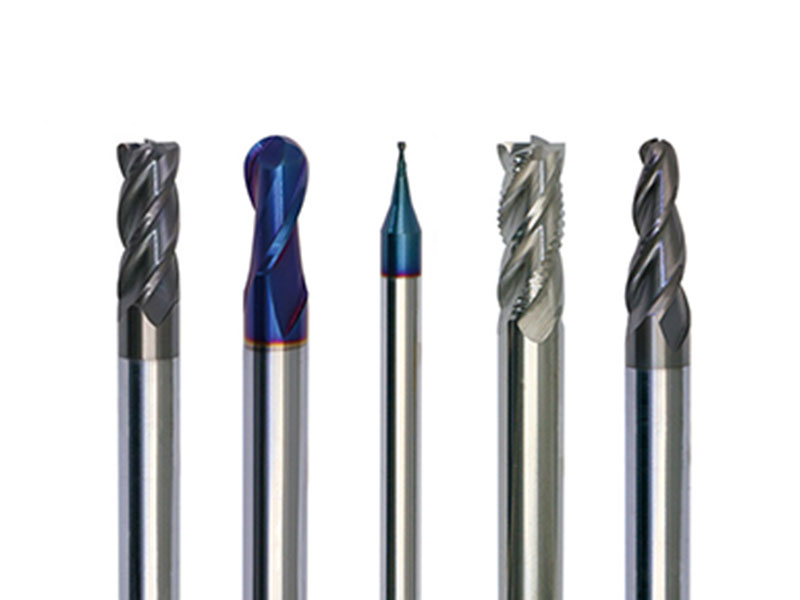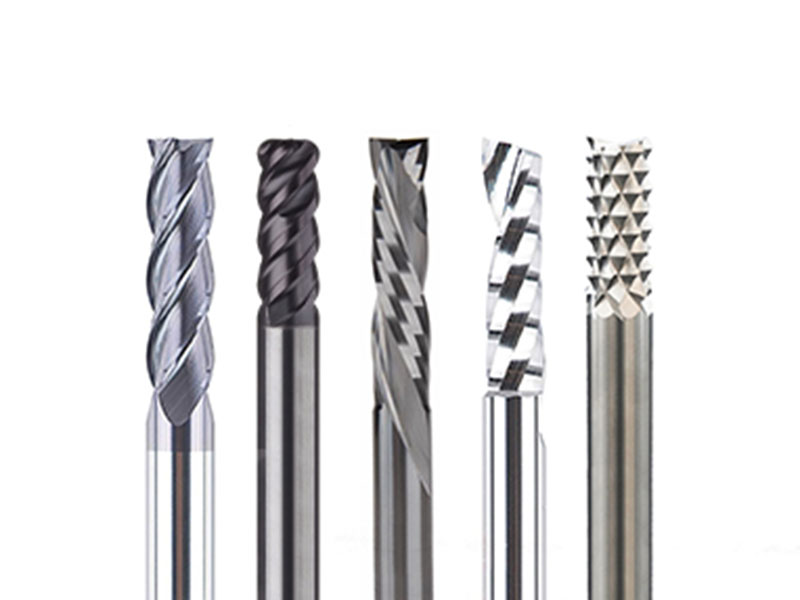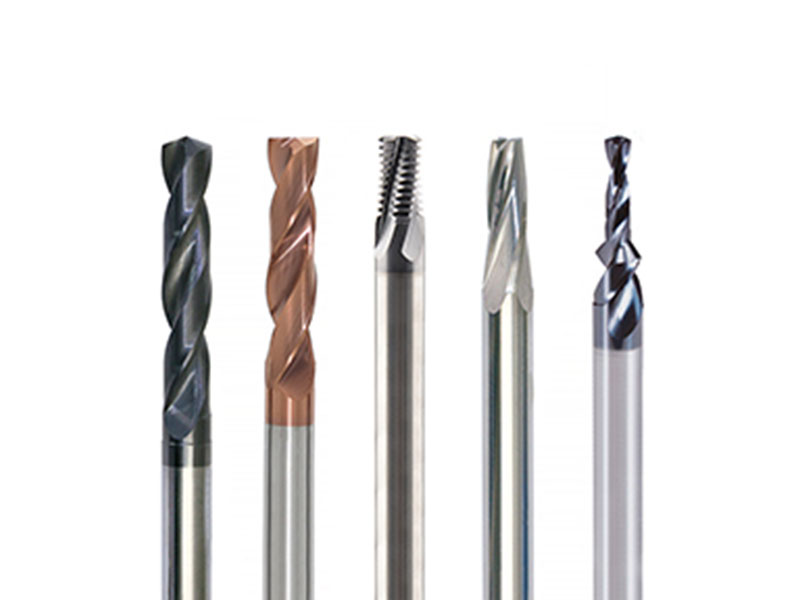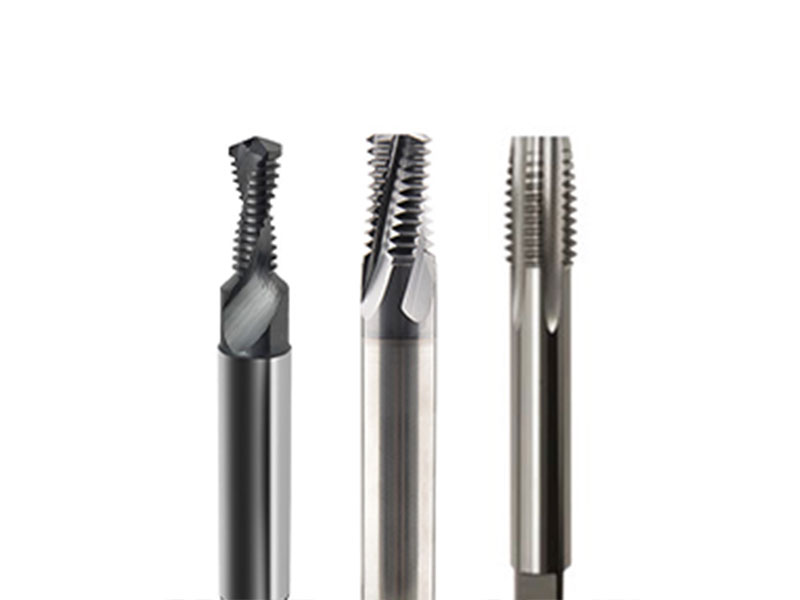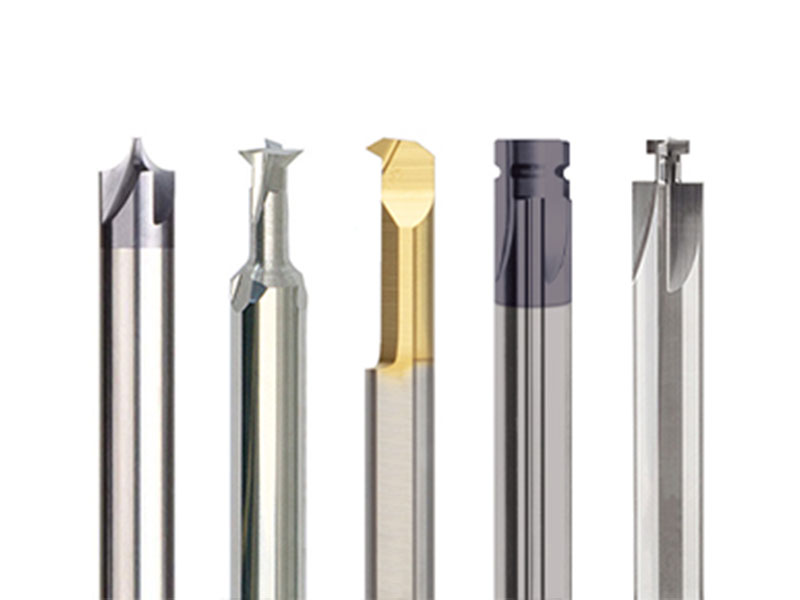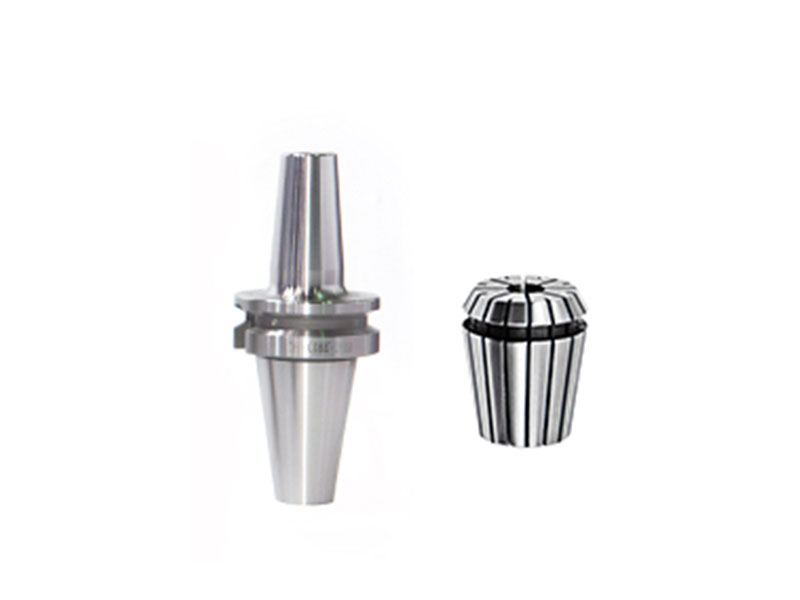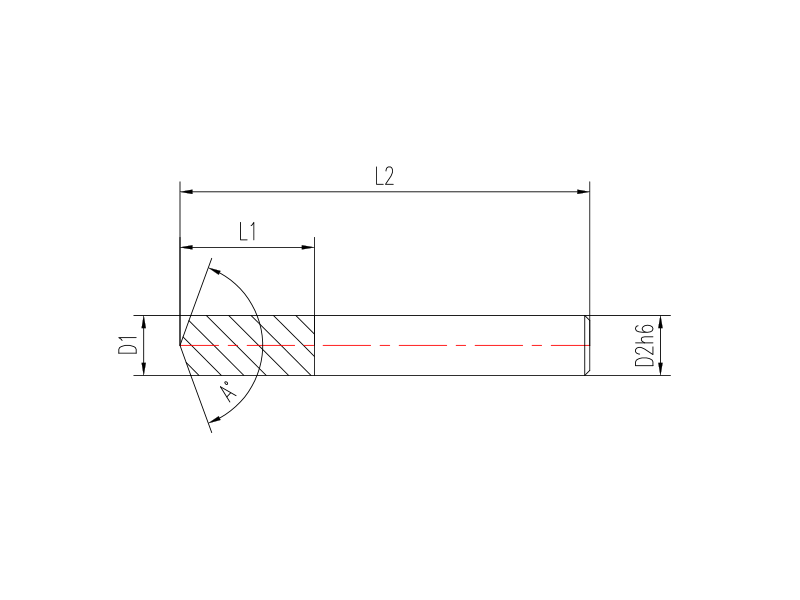How to differentiate the use of different solid carbide milling cutters
 Jun 17, 2021|
Jun 17, 2021| View:1293
View:12931.For solid carbide milling cutter with different number and length of cutting edges
Selection of the number of cutting edges
The number of cutting edges is selected according to the cutting method of solid carbide milling cutter.
For example, when cutting grooves with the same cutting width as the diameter of the tool, a larger chip holding slot is required, so a 2-flute end mill is generally selected. In the case of side cutting with a smaller cutting width, the rigidity of the tool should be given priority and a multi-flute end mill should be selected.
The lateral cutting width is the same as the diameter of the tool ⇒ need large chip holder
Small lateral cutting width⇒priority for tool rigidity
Selection of cutting edge length
The best solid carbide milling cutter edge length is selected according to the machining shape such as the depth of the groove shape. If you choose a solid carbide milling cutter with an excessively long cutting edge by focusing on the number of regrinds, chattering will occur and the characteristics of the solid carbide milling cutter will not be fully utilized, making it difficult to achieve a high-precision finishing surface and other undesirable effects.
2、For solid carbide milling cutter with different helix angles
The role of helix angle
The larger the helix angle of solid carbide milling cutter, the longer the contact length between the workpiece and the cutting edge. This can reduce the load per unit length of the cutting edge, so the tool life can be extended. However, at the same time, the cutting resistance becomes higher, so a toolholder with high clamping rigidity must be considered.
Cutting edge length (length of blue line) ⇒ Short
Cutting edge length (length of red line) ⇒ long
Key points of machining method
For difficult-to-cut materials such as stainless steel, which have low thermal conductivity and a high thermal influence on the cutting edge, cutting with a solid carbide milling cutter with a large helix angle helps to extend tool life. In addition, the characteristics of the finishing surface are changed by the helix angle. For example, when smooth finishing is required, a large helix angle end mill can sometimes be used.
However, when a solid carbide milling cutter with a large helix angle is used, the cutting resistance increases and the force of the right helix angle tool coming out becomes larger, so measures must be taken, such as using a toolholder with high clamping rigidity.
Although the rigidity of the tool can be ensured, a small helix angle solid carbide milling cutter is sometimes used in cases where the rigidity of the workpiece is low, such as thin plate processing.
3、What is the difference between solid carbide milling cutter's front angle negative front angle edge type and positive front angle edge type?
Depending on the processing purpose, it is necessary to choose the right material and the right place.
However, when machining materials such as high hardness steel, we recommend that you choose a solid carbide milling cutter with a negative-front angle cutting edge because you need sufficient cutting edge strength.
Selection of the number of cutting edges
The number of cutting edges is selected according to the cutting method of solid carbide milling cutter.
For example, when cutting grooves with the same cutting width as the diameter of the tool, a larger chip holding slot is required, so a 2-flute end mill is generally selected. In the case of side cutting with a smaller cutting width, the rigidity of the tool should be given priority and a multi-flute end mill should be selected.
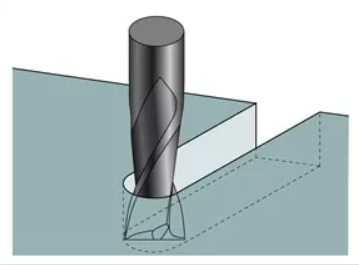
The lateral cutting width is the same as the diameter of the tool ⇒ need large chip holder
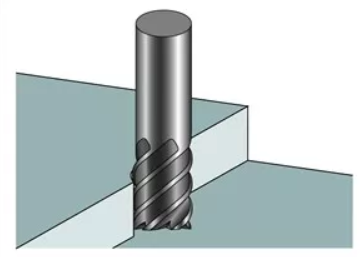
Small lateral cutting width⇒priority for tool rigidity
Selection of cutting edge length
The best solid carbide milling cutter edge length is selected according to the machining shape such as the depth of the groove shape. If you choose a solid carbide milling cutter with an excessively long cutting edge by focusing on the number of regrinds, chattering will occur and the characteristics of the solid carbide milling cutter will not be fully utilized, making it difficult to achieve a high-precision finishing surface and other undesirable effects.
2、For solid carbide milling cutter with different helix angles
The role of helix angle
The larger the helix angle of solid carbide milling cutter, the longer the contact length between the workpiece and the cutting edge. This can reduce the load per unit length of the cutting edge, so the tool life can be extended. However, at the same time, the cutting resistance becomes higher, so a toolholder with high clamping rigidity must be considered.

Cutting edge length (length of blue line) ⇒ Short

Cutting edge length (length of red line) ⇒ long
Key points of machining method
For difficult-to-cut materials such as stainless steel, which have low thermal conductivity and a high thermal influence on the cutting edge, cutting with a solid carbide milling cutter with a large helix angle helps to extend tool life. In addition, the characteristics of the finishing surface are changed by the helix angle. For example, when smooth finishing is required, a large helix angle end mill can sometimes be used.
However, when a solid carbide milling cutter with a large helix angle is used, the cutting resistance increases and the force of the right helix angle tool coming out becomes larger, so measures must be taken, such as using a toolholder with high clamping rigidity.
Although the rigidity of the tool can be ensured, a small helix angle solid carbide milling cutter is sometimes used in cases where the rigidity of the workpiece is low, such as thin plate processing.
3、What is the difference between solid carbide milling cutter's front angle negative front angle edge type and positive front angle edge type?
Depending on the processing purpose, it is necessary to choose the right material and the right place.
However, when machining materials such as high hardness steel, we recommend that you choose a solid carbide milling cutter with a negative-front angle cutting edge because you need sufficient cutting edge strength.
| Front corner | Positive front angle blade type | Negative front angle blade type |
| Features | The sharp cutting edge shape is designed to reduce cutting resistance, even good surface roughness can be achieved at low speeds. Positive The front-angle cutting edge type is suitable for soft materials that are prone to extrusion and fusion. materials that are prone to cracking and fusion. | When machining at low speed, the cutting resistance is increased, thus reducing the surface roughness; machining at high speed can obtain The surface roughness is good when machining at high speed. Negative leading edge with high tip strength The tool is suitable for machining high hardness steel, which is prone to chipping |
| Applicable cut materials | Resin, copper, aluminum, stainless steel, plain steel, tempered steel, etc. | High hardness steel, cast iron, etc. |
